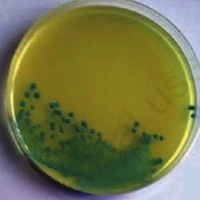Thymus vulgaris L. as a possible effective substitute for nitrates in meat products

Accepted: 8 October 2019
HTML: 22
All claims expressed in this article are solely those of the authors and do not necessarily represent those of their affiliated organizations, or those of the publisher, the editors and the reviewers. Any product that may be evaluated in this article or claim that may be made by its manufacturer is not guaranteed or endorsed by the publisher.
Authors
Nitrates are chemicals found naturally in some foods such as fruit and vegetables or added to others, especially meats, as a preservative. Their use as additives is regulated by European Commission to avoid any risk for human health. In order to reduce or replace the use of these compounds, we investigated the bacteriostatic/bactericidal activity of the essential oil of Thymus vulgaris L. against Listeria innocua, a nonpathogenic microorganism with the same morpho-cultural traits of L. monocytogenes. The study was carried out in vitro and in vivo on processed meat products, i.e. mature salami, by using thyme essential oil. Although the results are preliminary, the antilisterial activity of the thyme essential oil was shown to be similar to that of nitrates.
How to Cite
PAGEPress has chosen to apply the Creative Commons Attribution NonCommercial 4.0 International License (CC BY-NC 4.0) to all manuscripts to be published.

 https://doi.org/10.4081/ijfs.2020.7739
https://doi.org/10.4081/ijfs.2020.7739




